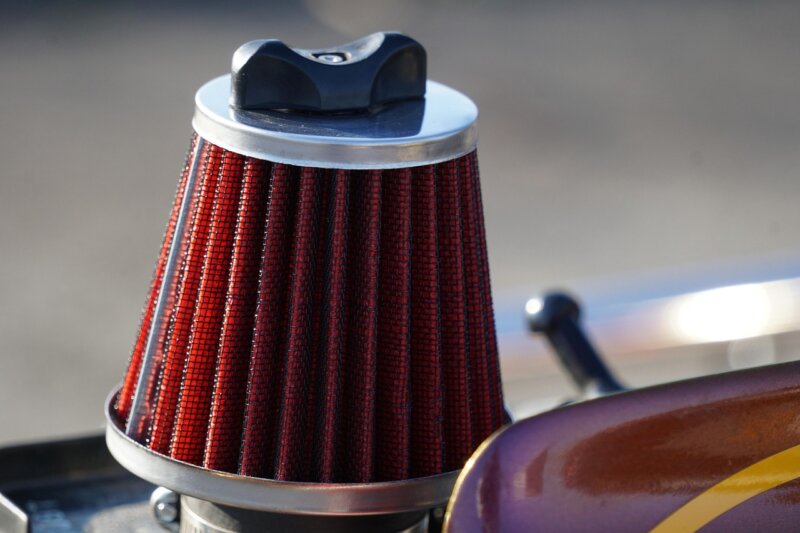Strong odors make a space feel dirty, even right after cleaning. Many sprays only hide smells. The goal is safe odor elimination that lasts.
This guide explains three odor control solutions. You will see how ozone, enzymes, and cover-ups compare for odor removal and air purification. The focus is on nontoxic choices and environmental safety. You will also learn where each method fits best for real deodorization.
How Odor Elimination Methods Work
Odor control uses different tools. Some remove the source through chemical neutralization. Others only mask the smell for a short time.
Neutralizing Odor Molecules
Ozone and chlorine dioxide are oxidizing agents. That means they break apart odor molecules in air and on surfaces. Ozone can reach very high levels in large jobs, over 20 parts per million, called ppm.
Enzyme cleaners work a different way. They target the organic compounds that cause bad smells. Hillyards Liquid Enzyme II contains more than 200 billion helpful bacteria per gallon to support this process.
Some products use pairing agents. These bond with odor molecules and make them inactive. HEPA filters remove 99.97 percent of particles at 0.3 microns, which is great for dust and smoke particles. They struggle with gases, so many odor molecules pass through.
Activated charcoal absorbs many gases. Most bags work for up to six months before replacement. For deep, stubborn odors, professional-grade methods are often needed for complete odor elimination and real air purification.
Masking Odors vs. Removing Them
Air fresheners, odor bombs, foggers, and gels mostly add scent. They cover up odors, they do not remove the source. Masking can last up to 30 days, but it fades fast and can mix with the smell.
Absorption methods like baking soda or activated charcoal use a chemical interaction with odor molecules. This is odor neutralization, not masking. Removing the source gives longer control and better indoor air quality.
In commercial spaces, too many fragrance dispensers raise costs and do little for clean air. A faulty dispenser can leak and spread odor, which hurts brand trust. Strong fragrances can also bother staff and guests, especially those with allergies or asthma.
Ozone Treatment
Ozone treatment breaks down odor molecules quickly. It can refresh air and surfaces after tough events like fires. Safe setup and strict controls matter.
Effectiveness and Best-Use Scenarios
Ozone is fast and powerful for strong odors, like smoke after a fire. Restoration crews use ozone generators that can exceed 20 ppm. These levels reach deep into rooms and help strip stubborn smoke residue.
Ozone often beats many chemical sprays on speed and reach. In food storage, gaseous ozone acts as an antimicrobial, which slows spoilage and browning on produce. That helps fruit stay appealing on shelves.
Ozone does best on hard surfaces and in open air. Porous items, like carpets or upholstery, hold on to smells and respond less. OSHA sets safety limits, 0.10 ppm for long exposure and 0.30 ppm for short bursts. These rules protect people and keep indoor air safer during treatment.
For post-fire cleanup or large storage needs, ozone stands out. Use expert guidance to plan the job and protect health.
Safety Considerations
Breathing ozone is hazardous. It can cause chest pain, cough, and breathing trouble, especially for people with asthma. Never run an ozone generator in an occupied space.
Only treat empty rooms. After treatment, bring in fresh air before reentry. Check levels with a meter if possible.
High ozone also harms plants, rubber, and some wiring. Protective gear helps reduce risk. Wear gloves, goggles, boots, long sleeves, and a tight-fitting mask during cleanup.
Studies show ozone does not remove many odor chemicals at public health safe amounts. For heavy fire or smoke odor, hire a pro for safe use. Consider other tools too, like hydroxyl generators, and ask for device guidance.
Enzyme-Based Solutions
Enzyme-based solutions use biology for odor removal. They are nontoxic and work without harsh chemicals, which supports environmental safety.
How Enzymes Break Down Odor-Causing Agents
Enzymes speed up reactions through catalysis. Catalysis means an enzyme helps a reaction happen faster without being used up. Each enzyme targets a specific substrate, which is the thing it acts on, like a lock and key.
Examples help. Proteolytic enzymes target proteins. Amylolytic enzymes work on starches. Lipolytic enzymes break down fats. Hillyards Liquid Enzyme II has more than 200 billion bacteria per gallon to support this biological cleaning.
After enzymes split an odor molecule, beneficial bacteria consume the leftovers. This biodegradation keeps working until the area dries. No fuel, no odor.
Adding probiotics can slow the return of odor-causing germs. That helps spaces stay fresh longer, even with pets or kids around.
Environmental and Health Benefits
Enzyme cleaners are biodegradable and nontoxic. They fit well in homes, schools, kitchens, and play areas. They break odor agents into simple byproducts like water and carbon dioxide.
Scent Renu enzyme formulas leave no harsh residue. That means less re-soiling and safer surfaces for daily contact.
Some organic cleaners include beneficial bacteria that support healthier indoor air. They avoid strong perfumes and corrosive substances. People and pets can use the space sooner, which is a real plus for busy homes.
Cover-Ups
Many people reach for sprays, mists, or plug-ins for quick relief. Scent masking can help in a pinch. Real odor removal needs more than perfume.
Temporary Solutions with Air Fresheners
Air fresheners deliver scent that makes a room feel clean fast. Sprays, plug-ins, gel beads, and automatic units all work by covering odors with fragrance.
Masks do not remove the source. Gel products may take hours to spread scent and can require a wait before re-entry. Most claim up to 30 days of relief, then you need more product.
Repeated use adds to indoor air pollution since artificial scents linger. Sensitive people can notice headaches, sneezing, or watery eyes after too much exposure.
Limitations of Masking Odors
Masking hides the problem. The source stays, and porous materials can trap more odor over time.
Heavy scents can bother guests and reduce customer visits. That can hurt a business brand and repeat sales.
Frequent refills increase costs. Leaky dispensers make a stronger, less pleasant odor. DIY attempts can leave sticky residue on floors or furniture, which adds more cleaning. Using only cover-ups means more spending without true odor elimination.
Comparison of Ozone, Enzymes, and Cover-Ups
Each option has strengths. Safety, speed, and staying power are the main differences. Your mix may change by odor type and budget.
Efficiency and Long-Term Results
Enzyme cleaners give lasting results in many cases. Enzymes keep working on odor-causing agents until the area dries. They do well on mildew, smoke, pet, and body odors.
Ozone can clear smells fast, yet results can fade in 1 to 2 weeks, especially in porous materials like carpet or cushions.
Absorption methods, like activated charcoal, work up to six months, then need a swap. Baking soda needs changes every two or three months for best results.
Cover-ups need routine use every few weeks or monthly. They maintain a scent but do not fix the source. Deep cleaning costs more effort, but it removes odors at the root and avoids leftover perfume.
Safety and Environmental Impact
Ozone removes odor quickly, but it is risky for indoor air. It can trigger breathing problems and may react with other compounds to form new pollutants, such as formaldehyde. Ozone and thermal foggers must run in empty spaces, and protective gear helps reduce exposure.
Enzymatic cleaners are different. They break down odor matter without toxic residue. Most are biodegradable, which limits impact on soil and water. Scent Renu mists avoid excess moisture, which helps lower mold risk.
Cover-ups may seem harmless. Many are labeled non-toxic, yet packaging can pose a choking risk for children. Activated charcoal is safe for odor control when stored well. Do not ingest the powder or let it blow into the air.
If in doubt, ask a certified pro for help. They can choose the right odor neutralizers for your space and confirm chemical safety.
Bottom Line
Safe odor elimination is possible with the right plan. Ozone treatment can crush tough smells, yet it requires strict safety steps and empty rooms. Enzymes offer nontoxic odor removal with fewer risks and good long-term results.
Cover-ups hide odors but do not solve the source. For best air purification, start with source removal, then choose a method that fits the job. Good options include enzymatic cleaners, activated charcoal, and HEPA filtration paired with cleaning.
For severe smoke, mold, or chemical smells, bring in a qualified professional. Follow product labels, and keep kids and pets away until the area is safe. Choose odor control solutions that are effective, sustainable, and truly safe for daily living.







